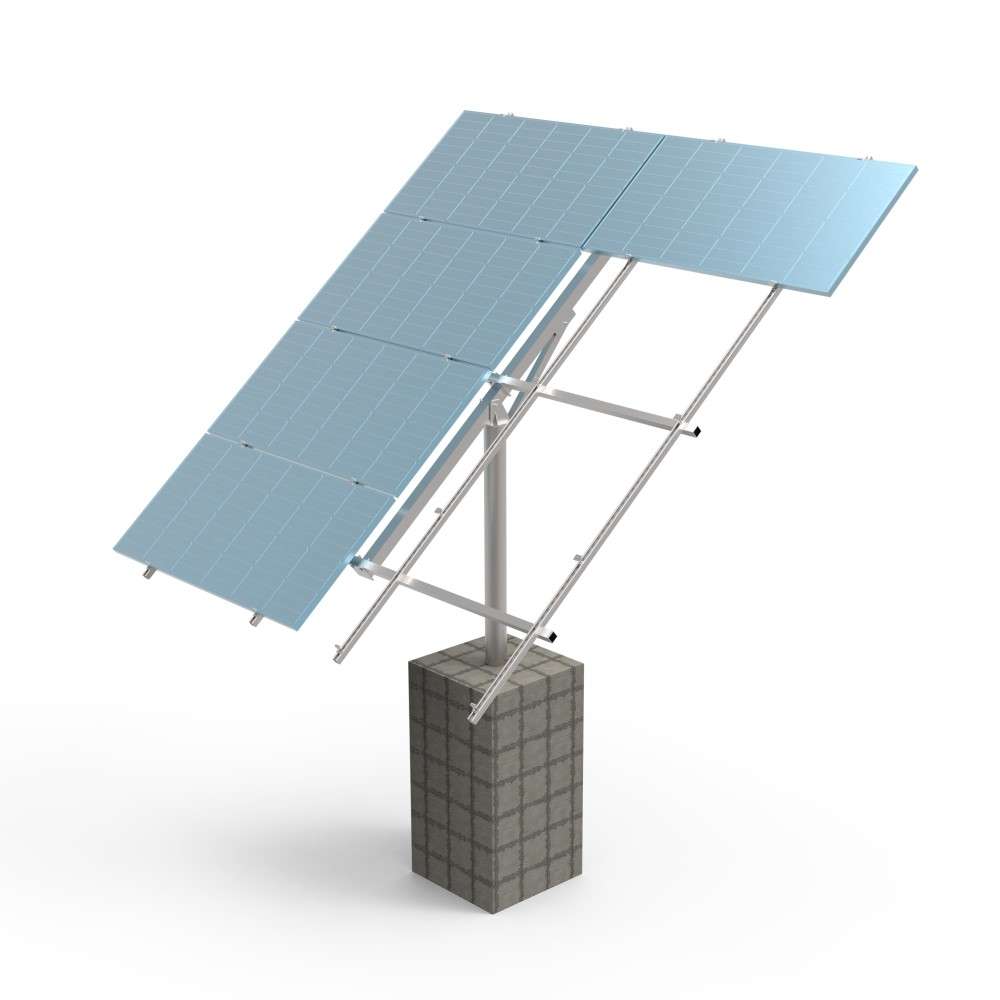RenewSolar’s Single Pole Solar Mounting System: Innovation for Everyone
At RenewSolar, we’re always pushing the boundaries of solar technology. Two years ago, our open project explored a dual-axis solar tracker. This year, we’re excited to announce our next endeavor: a single pole solar mounting system designed for manual dual or single-axis adjustment, with potential for electronic enhancements.
Unlike standard ground mounts, our system prioritizes mobility and adaptability. The core innovation lies in the fixings we’re proposing, allowing you to manually adjust both the tilt and angle of your solar panels to optimize sun exposure. While manual adjustment is key, we’re actively exploring mechanisms for effortless rotation to ensure ease of use.
We’ll offer two base options for versatile installation: an in-ground solution or a concrete fixing plate.
A critical area of focus for us is the strength and durability of the pole’s intersecting parts. Moving away from common weak points found in many designs, we’re incorporating industrial forged parts. This robust design draws inspiration from larger commercial solar mounting systems, ensuring a sturdy and reliable structure.
Our goal is to create a fairly large, yet remarkably simple system that anyone can build and use. We’re aiming for a four-part design to keep complexity to a minimum, ensuring both functionality and aesthetic appeal.
One of the primary challenges we’re addressing is the design of the arms that support the solar panels. We envision the system accommodating three 500W bifacial solar panels, which collectively weigh 66kg and span 3.4 meters.
The ability to turn the panels to track the sun throughout the day is crucial. We’re weighing various methods to achieve this, balancing robustness, ease of control, and construction simplicity. While a purely manual approach offers simplicity, the need to adjust panels every few hours could become a chore. Conversely, an electronic solution, while convenient, introduces additional cost and complexity. Finding the optimal balance here is a key aspect of our design process.
The core parts we have found cost around £120, excluding the solar panels. however the cost could rise if there are electronics and additional solutions to problems which are encountered.
If you would like to join the open solar project check this link to the forum

No responses yet